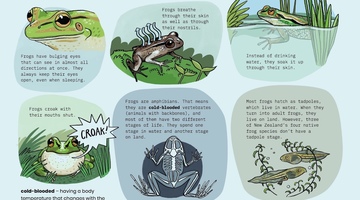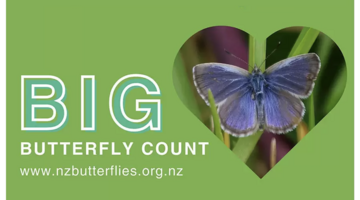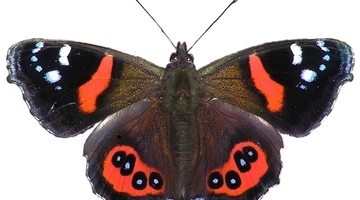

Moths are members of the order Lepidoptera, but these mostly nocturnal creatures are often in the shadow of the brighter, day-flying butterflies. New Zealand has fewer than 20 butterfly species ...
READ MORE

Adventure is engaging in an unusual or daring experience. Discovery is the act of finding or learning something for the first time. Adventure and discovery are both pretty exciting prospects – so ...
READ MORE

The New Zealand Government’s Participatory Science Platform (PSP) is a world-first initiative that aims to engage communities in research projects that are locally relevant and have quality ...
READ MORE

In this activity, students set up and walk a transect to observe and record butterfly sightings. They act as citizen scientists to monitor changes in the local environment. Modify this activity ...
READ MORE

Frogs for the future? is a ready-to-use cross curricular teaching resource. It uses the Ministry of Education’s 2019 Connected article Kimihia Kermit by Philippa Werry. Rights: Crown 2019 Frog ...
READ MORE

Pollinators are insects that visit flowers to drink nectar or feed on pollen. During this process, they get covered in pollen grains and then transport the pollen from one plant to another ...
READ MORE

This New Zealand-based citizen science project collects data about butterflies in our gardens, schools, parks and farms – any location in the country or on the outer islands. This annual event – ...
READ MORE

iNaturalist logs hundreds of thousands of photos of flora, fauna and fungi. There are even sound recordings too. Each is described and geo located. iNaturalist is used by citizens and scientists ...
READ MORE

This project involves the pesky Pieris rapae (better known as the white butterfly or white cabbage butterfly), which is very common in Aotearoa New Zealand. It is believed to have originated in ...
READ MORE

In this online PD session recorded on 30 July 2015, primary school teacher Angela Schipper describes how she used the Butterflies resources from the Science Learning Hub in the classroom. In ...
READ MORE

The New Zealand Curriculum has a strong focus on ensuring that all students have the skills and knowledge to participate in public debates and decision-making processes as critical, active ...
READ MORE

This unit plan is designed for students in years 1–5. When someone mentions the word ‘butterfly’, what image pops into your head? Chances are it’s the monarch or the white butterfly, as these are ...
READ MORE
Dr Robert Hoare, of Manaaki Whenua – Landcare Research, talks about why he loves moths – a fascinating story of how an entomologist grew to love these night-time fliers. Points of interest ...
READ MORE
Quantitative ecologist Dr Barbara Anderson and members of Te Kura Kaupapa Māori o Ōtepoti introduce the Ahi Pepe MothNet project.
READ MORE
Ka kōrerorero kā tamariki me kā kaimahi o Te Kura Kaupapa Māori mō kā whāika o te whakatakaka Ahi Pepe MothNet, mō te te hiraka o kā pepe tuna i kā pūnaha hauropi, ā, mō te take he tauira pai te ...
READ MORE

Exploring moths as ecological indicators of health and connectedness in our natural world. Select here for further information, transcript and copyright.
READ MORE

Most of New Zealand's butterflies belong to the Nymphalidae and Lycaenidae families. Use the Slideshow menu for further options, including view full screen, and go here for the download option.
READ MORE

Use this Aotearoa New Zealand native butterflies slideshow to learn more about native butterfly habits and behaviour, then go butterfly hunting! Use the Slideshow menu for further options ...
READ MORE